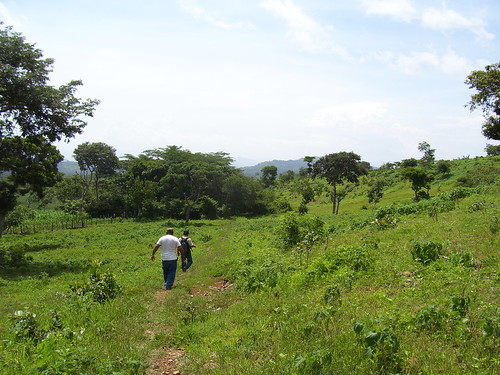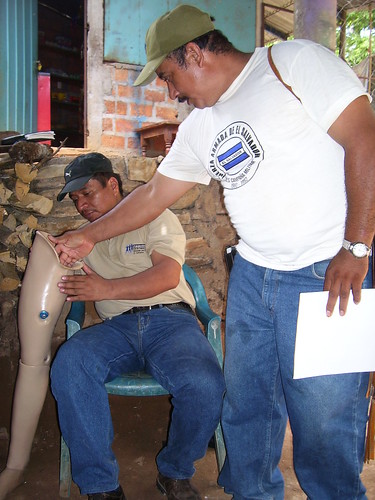In a country where 49% of the rural population lives below the poverty line, realities of the campo (rural areas) can seem drastically more difficult for someone living with a disability. These past two weeks I have been traveling with La Red de Sobrevivientes’ outreach workers to visit survivors in their homes. As we rode busses and moto-taxis, walked through valleys, crossed rivers, and climbed into the back of pick-up trucks to get from place to place, everywhere I looked I saw obstacles for people with disabilities. The dirt roads and cobblestone streets make it nearly impossible for someone in a wheelchair to get around, doorways are too narrow, and there are no ramps. In many cases when someone with a physical disability needs to get to town to for meeting or visit the doctor, friends and family have to carry him/her in a hammock. The lack of accessibility in the campo makes it that much more difficult for someone with a disability to live independently. Sadly, in many cases people are confined to their home.

Armando and Jose (both amputees) walking through the rual village of Guacotecti to visit another survivor
Through the Red de Sobrevivientes’ three main programs (health, economic opportunity, and social empowerment) they are building a network of support for people with disabilities living in rural areas. One priority is improving basic living conditions. Many times the Red will deliver building materials, or basic furniture such as a bed, so that a home can be made more accessible and/or livable for someone with a disability. In some of the more extreme cases when a person is found in very poor living conditions, the Red will help a ‘basket of goods’. Sometimes providing basic food staples or helping someone get running water to their home has to be the first priority.
Improving living conditions is not just about providing tangible materials such as food and shelter. The Red is dedicated to improving lives by empowering people and giving them the tools they need to take control of all aspects of their life. Through the health program the Red is not only providing peer support to improve self-esteem and morale, but connecting people with resources and much needed medical consultations. By assisting a survivor get a new prosthetic, crutches or a wheelchair, the Red is not only helping someone be more mobile, in many cases they are opening up a world of possibilities and a newfound independence.

Armando and Jose discussing a prosthetic leg adjustment needed by a member of the Ilobasco Association of Disabled Persons
The economic opportunity program is assisting survivors with job training and helping them to improve or start a small business. In many cases all that’s needed is a little motivation, improved bookkeeping skills, or start-up in the form of materials. The Red is very conscious about not giving ‘hand-outs’. They want to ensure that survivors take ownership of their projects by investing time, money and labor into their businesses. There are also other program guidelines such as participation in skills training courses and giving back to the community by volunteering. In one community I visited a group of seven survivors (all amputees from landmine explosions during the civil war) the men had begun working at the school as part of a community service project. Volunteering their time and obtaining the materials to repaint the school, fix broken desks and windows, and clean up the grounds. They have enjoyed giving back to the community so much that they have plans to help start a garden at the school. One of the men told me it fills his heart to be able to give to his neighbors. It’s empowering for the group to be able to give back, especially when many times before the community didn’t recognize their worth.
The social empowerment program is one of the more dynamic ways that the Red is enabling people with disabilities to change their own lives. Through the methodology of peer support, community associations of persons with disabilities are being formed in every department where the Red works. The associations are receiving training from the Red about community organizing and policy advocacy. Associations advocate for their rights at the local municipal level. One priority of the social empowerment program is to ensure that disability rights are being acknowledged and integrated into local politics. If a new medical facility is going to be built by the mayor’s office, the association will ensure that it’s accessible to persons with disabilities.
All three of the Red’s programs are focused on empowering people, ensuring their rights are being recognized, and carving a path to accessibility and independence. They are not only helping people survive with a disability, they are giving them the tools to thrive.
Posted By Carolyn Ramsdell
Posted Jul 30th, 2009

